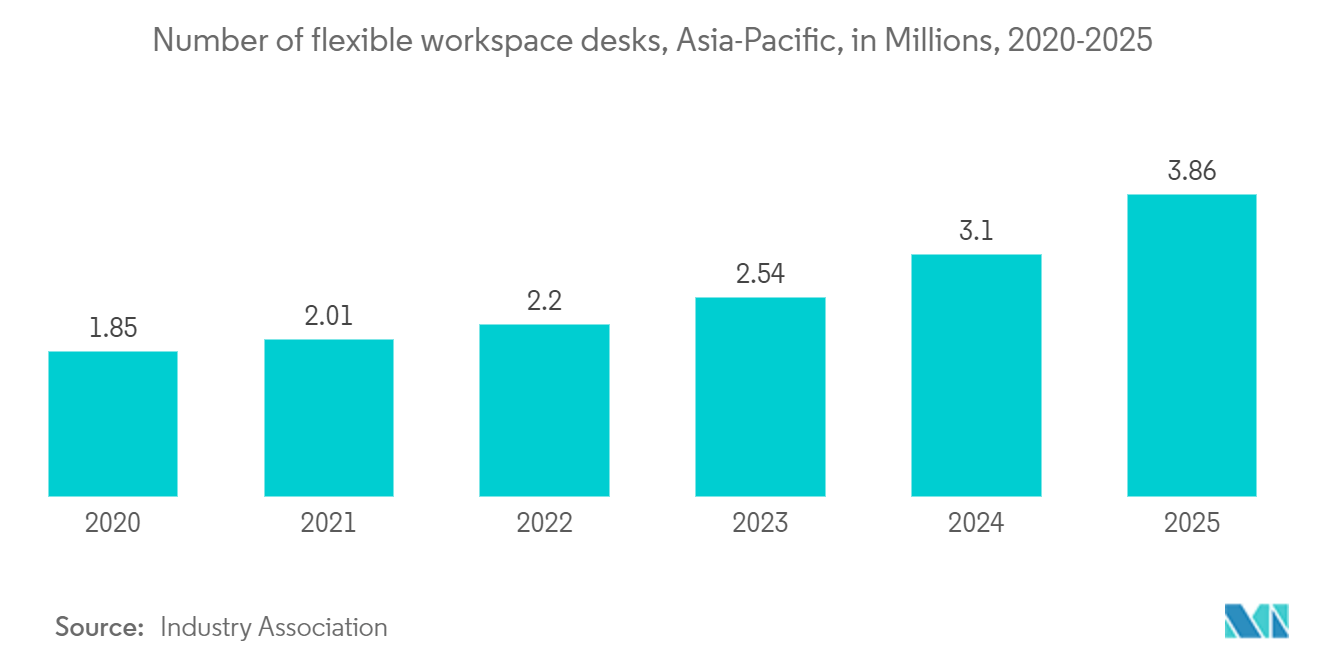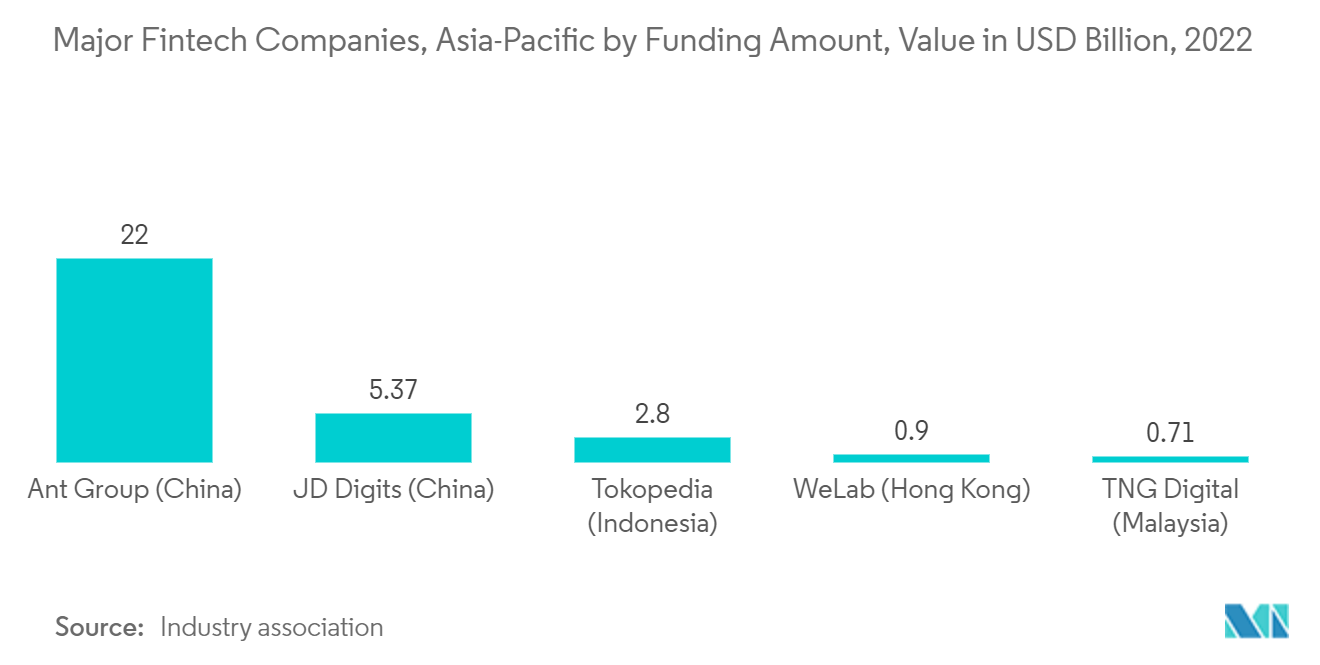Market Trends of ASEAN Office Real Estate Industry
This section covers the major market trends shaping the ASEAN Office Real Estate Market according to our research experts:
Demand for Co-Working Spaces Driving the Market
- Co-working and flexible spaces are valuable resources for businesses operating in Asia. The demand for flexible office spaces is increasing more quickly in ASEAN countries than anywhere else in the world, according to data from industry experts. In just three years, the number of major flexible space operators has doubled, and flexible floor space has expanded by 150%.
- Many jobs no longer require employees to work in conventional offices as a result of the growth in digital connectivity. A global market reach is also something that companies need more and more, but they don't want to pay for many offices. This led to the development of the co-working phenomenon, which involves independent professionals-such as freelancers and project-based workers-working together in a shared workspace. Companies that support flexible work schedules have started putting their remote workers in these settings.
- With the decentralization of the office, businesses now have access to an endless talent pool. Employing borderless hiring allows businesses to find the best personnel and place them in the coworking spaces that are closest to them. Companies in Malaysia, Indonesia, and Singapore that currently deal with a growing talent scarcity and a skills mismatch stand to benefit greatly from talent becoming the new oil. Increased variety results from utilizing a larger talent pool since stay-at-home parents, people with disabilities, the elderly, and students may all offer their expert skill sets to the economy.

Rise in Start-ups Driving the Market
- Local venture capitalists are actively looking for new growth areas while the U.S. market is growing more costly and its prices are becoming less and less correlated to fundamentals. Many people are keeping an eye on the nations of Southeast Asia. With a concentration on Vietnam, Thailand, Indonesia, Malaysia, Singapore, and the Philippines, this is a broad but very powerful prospective market.
- Over the past few years, the region's digital and tech businesses have experienced a tremendous boom. Jungle Ventures estimates that the aggregate valuation of Southeast Asia's technology startups was USD 340 billion in 2020 and that it will triple by 2025. Although each of the nations is at a distinct stage of development, they all provide a wide range of prospects for the establishment of cutting-edge technologies and tried-and-true business models.
- A strong foundation for innovation is giving new startup innovations a big boost. The growth of new digital businesses is encouraged by governmental policies, which is another component that plays a role in this. Under the Thailand 4.0 program, Thailand provides tech companies with one such program that includes visa and tax advantages. Grab, the "Uber-killer" of Southeast Asia launched in 2012, has provided financial services, food delivery, rides, and hotel reservations. It forced Uber to leave South East Asia in 2018. Currently it is the most valued Southeast Asian unicorn in the IT sector, went public in New York in 2021 after a record-breaking USD 39.6 billion merger.
- Shopee, a global technology corporation with its headquarters in Singapore. The site first functioned as a marketplace connecting consumers. The platform had 200 million downloads as of 2019. With 343 million monthly visits as of 2021, it is regarded as Southeast Asia's largest e-commerce platform. In addition to these, there are other firms that are developing in the area, receiving funding and succeeding. According to Cento Ventures, venture capitalists invested in 393 businesses in Southeast Asia in the first six months of 2021.


